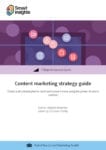Content marketing is one of the best ways to generate leads as a B2B company. However, many struggle with executing it correctly. Are you one of them?
Around 70% of users on the internet learn via content before purchasing a product versus traditional advertisements. Times are changing.
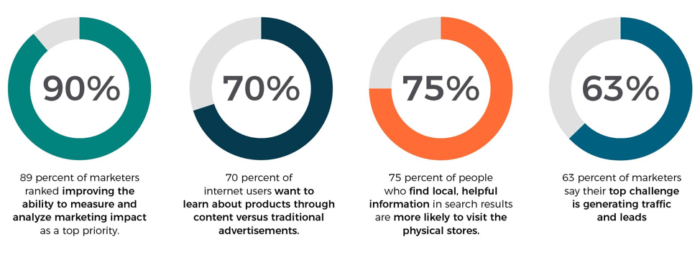
The average person used to need advertisements to tell them about a product or service.
Not anymore. B2B consumers are smarter and more resourceful than ever. They have everything they need at their fingertips to make an informed decision.
That’s where content marketing comes in. It aligns with this behaviour by offering high-quality valuable content that educates prospects on a relevant topic. This, when done properly, gets them sucked into your lead generation funnel, as well.
But how exactly do you use content marketing to generate leads? It’s not as easy as writing a couple of short blog posts and waiting for the phone calls to come in. You need to use the following strategies.
Begin by crafting your buyer personas
If I asked you who your ideal client is, would you be able to describe them in great detail? If not, you need to work on your buyer personas.
A persona is the personification of your ideal customer. It typically includes strengths, weaknesses, questions, demographics, and values.
It looks something like this:
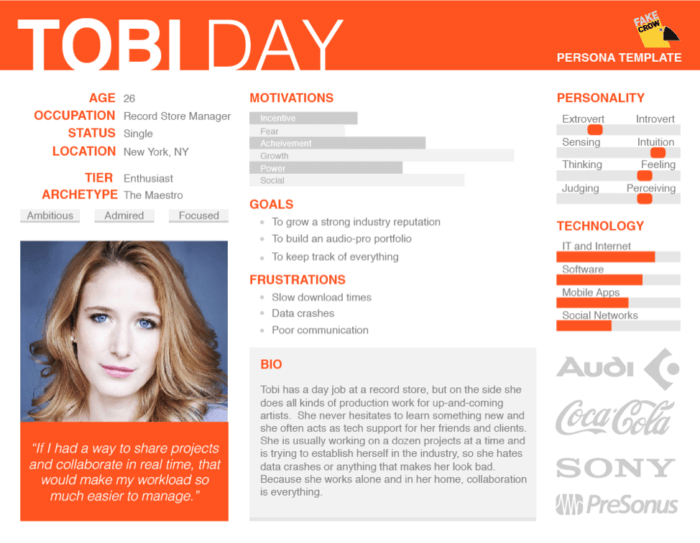
You can use a free tool like Canva to piece together a graphic like this easily or simply write out the information into a document instead.
But, why is this important? It’s been proven that businesses who use a buyers persona experience a 2x jump in email open rate and 5x click-through rate.
Additionally, you can align every piece of content you produce with your buyer personas. This means you only attract the most relevant users to the website, increasing the odds of them becoming high-quality leads.
Every time you are researching a piece of content and coming up with ideas, ask yourself if it aligns with your ideal client’s needs and interests. If not, move onto the next one!
Focus on B2B topics versus B2C
B2B and B2C are only a letter apart, yet they are extremely different. Speaking to business owners and executives is not the same as targeting the average consumer.
You need to understand how their interests, pain points, and values differ. This is the key to good B2B content marketing.
B2B topics typically pertain to the following areas:
- Marketing
- Advertising
- Budget and costs
- Trends and opportunities
- Guides and tutorials
- Case studies
- Whitepapers
The same can be said for B2C topics which include:
- Listicles
- Entertainment
- Editorials
- News articles
- Product reviews and comparisons
Let’s look at two real-world examples, beginning with the publication Entrepreneur.

Note how instantly you see articles on strategy, organization, and companies.
Yet when we go over to a website like BuzzFeed, it’s geared towards news, gossip, and lists.
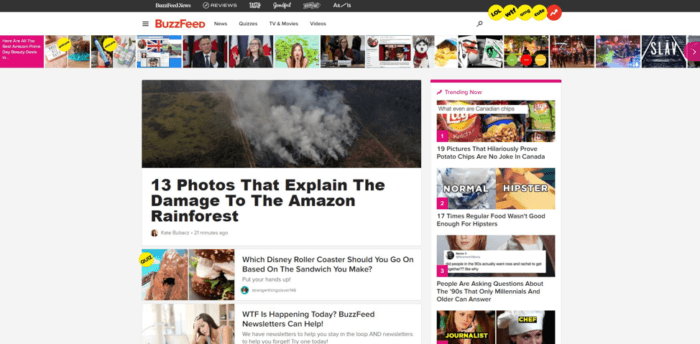
See how the two differ? With that being said, B2B content marketers will want to focus on producing content which educates around strategies, trends, case studies, and other topics related to business.
Integrate content with lead magnets
No content marketing funnel is complete with a lead magnet. These are free resources like e-books, courses, and whitepapers that are offered in exchange for a subscriber’s contact information.
After the lead has signed up, they are emailed the magnet and can now be marketed to via email. While popups and sidebar forms are common ways to acquire subscribers, you can increase the number of B2B leads you generate by directly integrating lead magnets into your content.
Look at how Smart Insights pulls this off. Most of its content has free resources at the end, which users can collect.
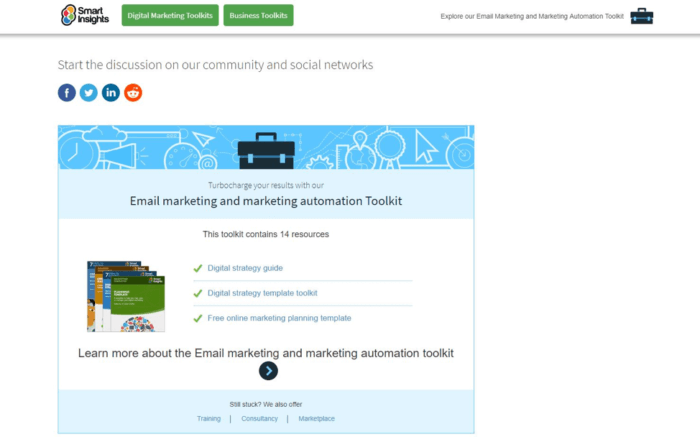
Make the lead magnet as relevant as possible to each piece of content, too. Cheat sheets and checklists are great for this reason.
Understand how keywords attract different types of users
Not all search terms are made the same. The keywords you use will drive different types of users to your website, so it’s crucial to understand the different ones which include the following.
Informational keywords
These, as you could guess, have the intention of finding information. Targeting informational keywords will be your bread and butter as a B2B content marketer.
Users entering these search terms into Google are looking for guides, tips, tutorials, and similar content. Focus these types of content on informational keywords.
Examples of informational search terms are:
- How to use Pinterest for lead gen
- Email marketing tips
- Blog SEO best practices
Transactional keywords
Search terms that include buying intent are known as transactional. The user interesting these into Google are interested in purchasing a product, so they regularly use adjectives like:
- Best
- Affordable
- Cheap
- New
- Latest
- Etc
Similarly, review and comparison style keywords have transactional meaning, as well. These types of keywords tend to be consumer dominated.
You won’t be targeting these too often as a B2B marketer unless it makes sense to do so like comparing two business tools or making a list article.
Navigational
Keywords which include a brand name are navigational since the user is trying to navigate to a specific company’s website or another asset.
These are commonly used for PPC campaigns where a brand will buy a second position on the front page for their brand name, acquiring more search engine market share.
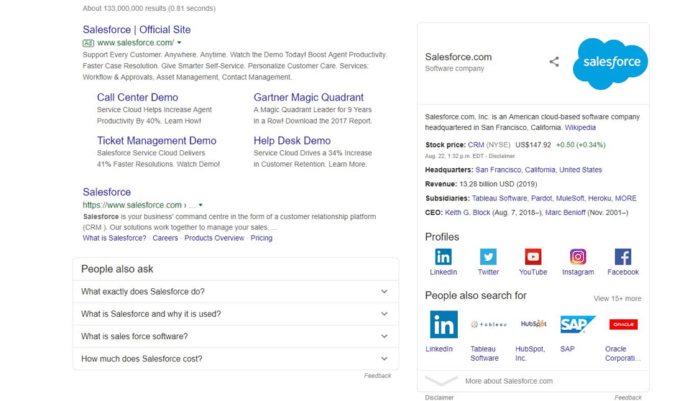
Use your case studies as resources
The inbound marketing funnel consists of three stages:
- Top of the funnel
- Middle of the funnel
- Bottom of the funnel
Case studies are known as middle-of-the-funnel content while top-of-the-funnel content is normally blog posts or videos, attracting a broad range of users. Offering case studies, however, will only be of interest for people that have a higher lead score.
Thus, the whole process looks like this:
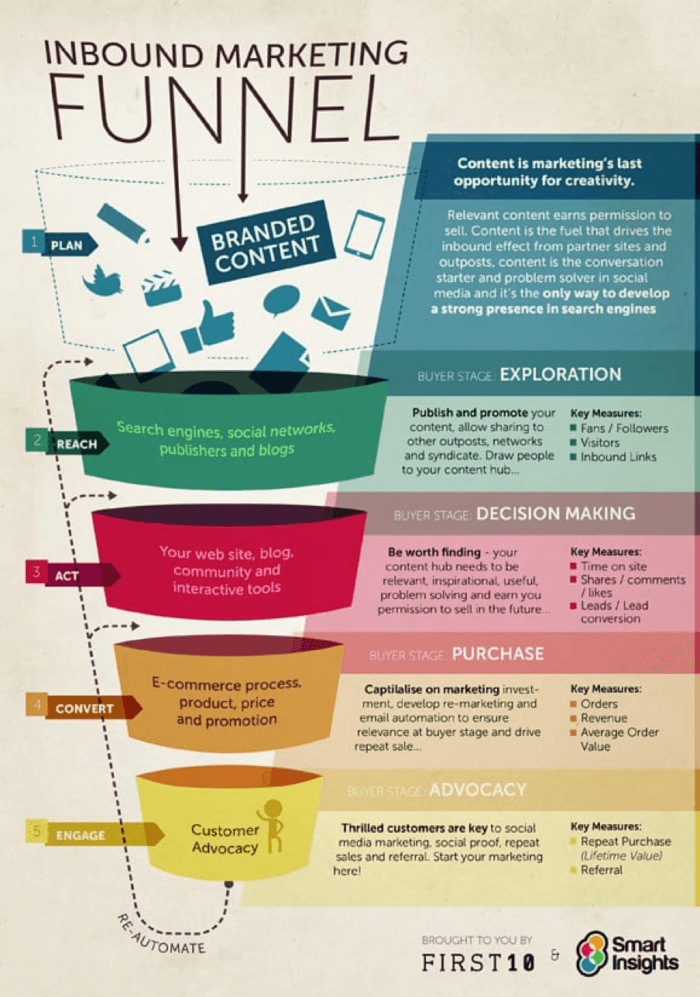
You can narrow down the more serious prospects reading your content by integrating case studies directly as resources.
You’re going to perform internal linking anyways, right? You can get more bang for your buck by showcasing what your company does while extending a real-life example.
Wrapping up B2B lead generation with content marketing
Content marketing is one of the most effective ways to generate leads as a B2B business. The key is to begin by refining your buyer personas, allowing you to hyper-target a small segment of users.
Then, focus on topics that a business owner or executive would be interested in. For example, there’s a huge difference between what’s published on Entrepreneur than Buzzfeed since one mostly caters to B2B and the other B2C.
Lead magnets should also be directly integrated into content to increase how many subscribers you acquire.
Since SEO is incredibly important, especially for blog posts, it’s crucial to understand how informational, transactional, and navigational keywords differ.
Lastly, don’t underestimate the power of case studies. These showcase your company’s abilities and can serve as extra resources for readers.

